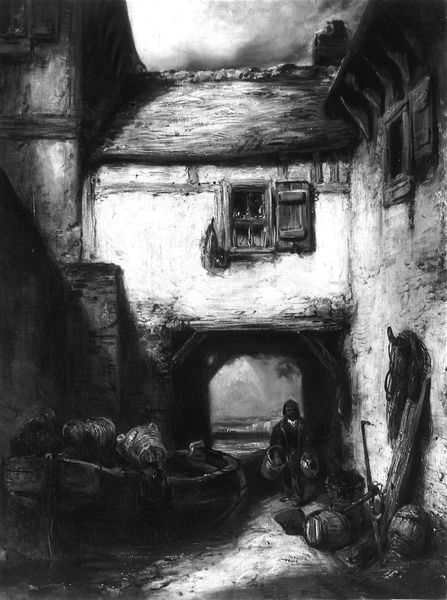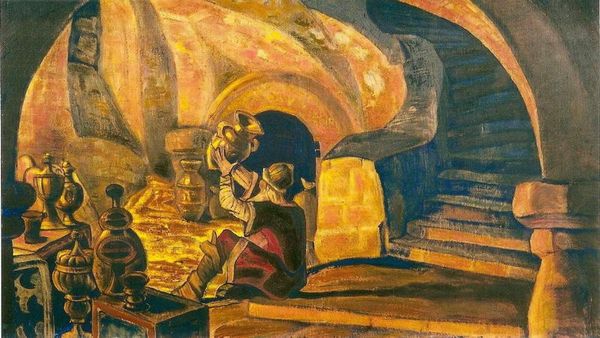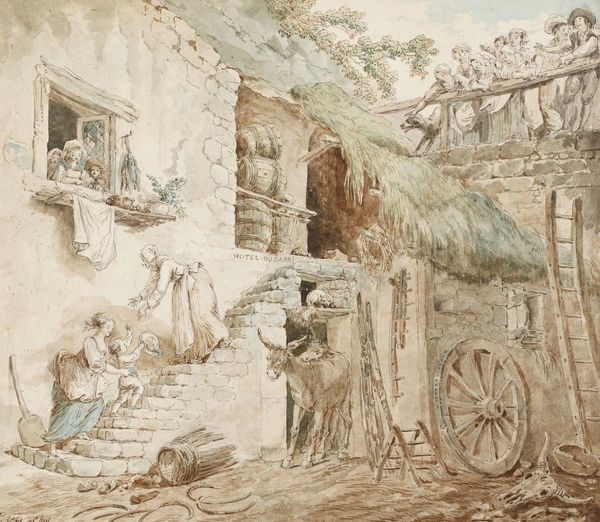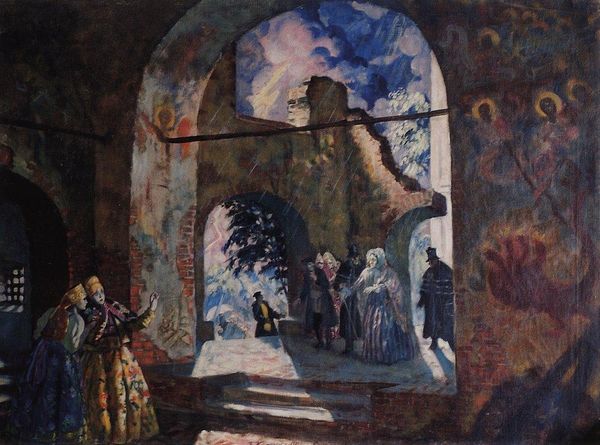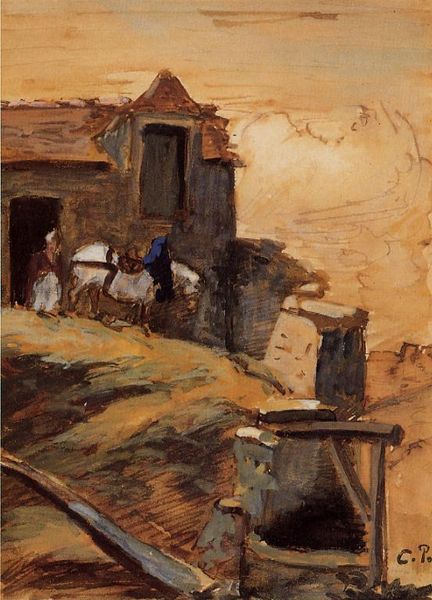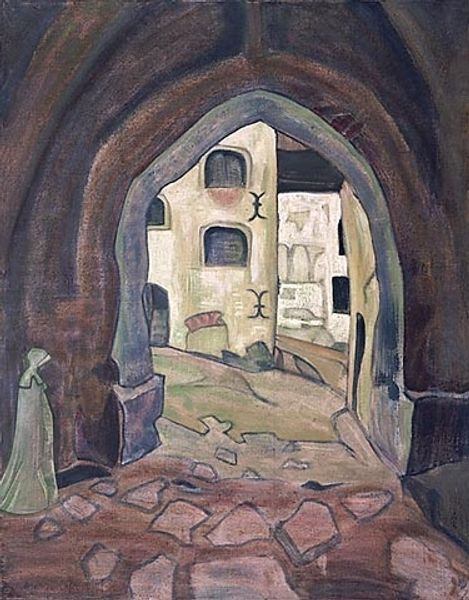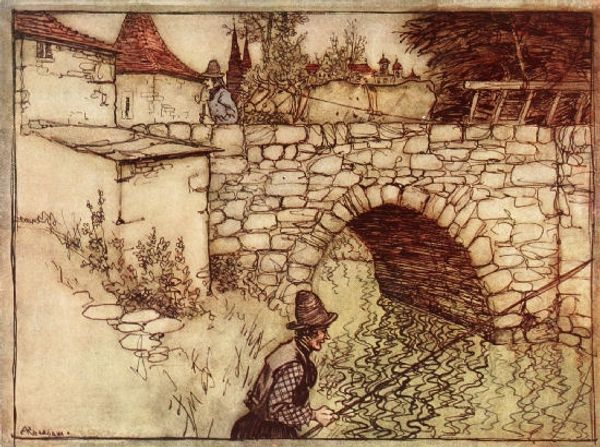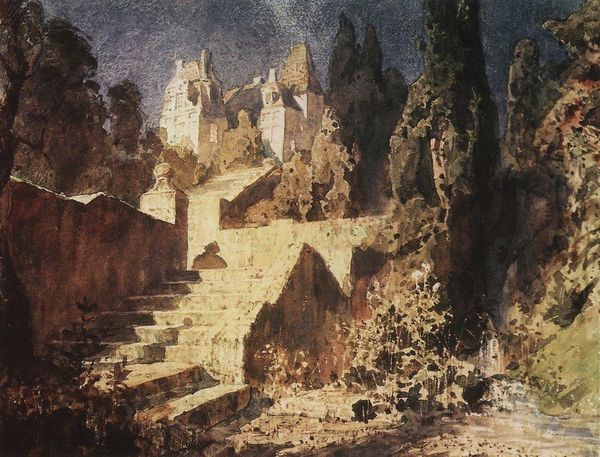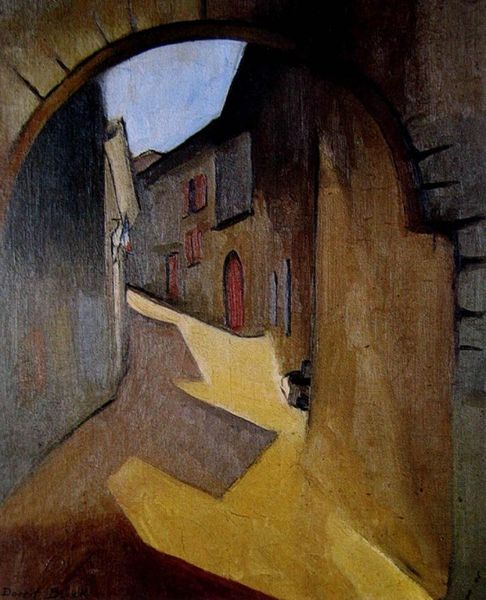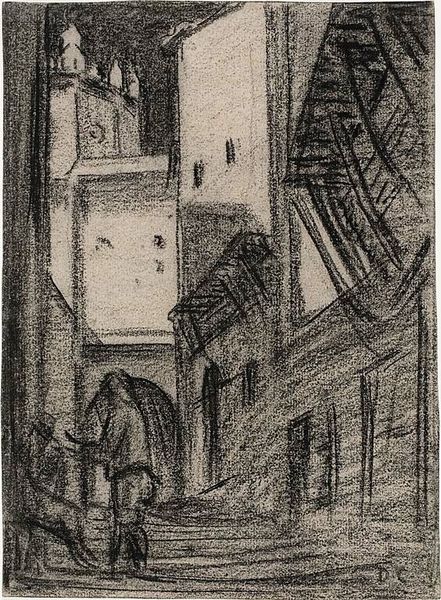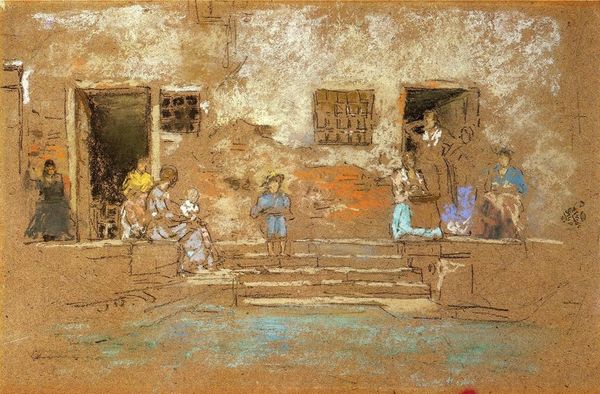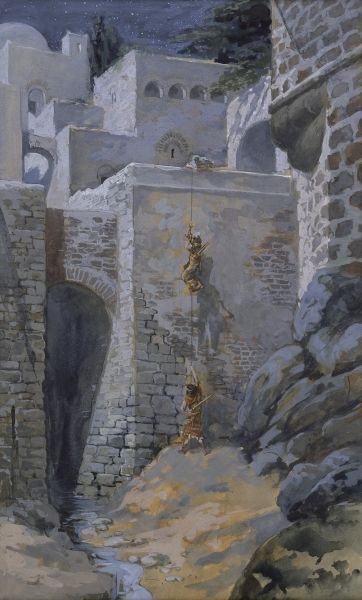
drawing, painting, pastel
#
portrait
#
drawing
#
painting
#
neo-impressionism
#
oil painting
#
cityscape
#
pastel
#
modernism
#
watercolor
Copyright: Mstislav Dobuzhinsky,Fair Use
Curator: Dobuzhinsky's "Riga," captured with what looks like pastel and watercolor, evokes a sense of crumbling beauty, don’t you think? Editor: Absolutely, there's a palpable tension between decay and resilience. You've got this architectural ruin framing a glimpse of everyday life, a figure moving into the distance... It feels almost staged, inviting commentary on social inequalities and spatial divisions in early 20th-century Riga. Curator: Staged is an interesting way to put it. For me, it's more about the emotional resonance—a feeling of faded grandeur, almost like a wistful memory of a city. The subdued colors amplify this, creating a poignant atmosphere. It reminds me of looking at old photographs in my grandmother's attic; each tells a tale but conceals just as much. Editor: I see your point, but it also prompts questions about whose memories are being valorized and whose are erased within these romanticized cityscapes. Think about the artist, Dobuzhinsky; part of the Mir iskusstva movement—artistic and intellectual circles with often elitist tendencies and aesthetics... Were they also engaging with marginalized narratives? Curator: It's a fair question. I can't pretend to know his heart, but I think there's more at play here. This image invites us to engage with the beauty in what is ostensibly mundane: sunlight dancing through broken archways, ordinary people climbing stone steps… He reframes what's considered ‘worthy’ of our gaze. Editor: I acknowledge that re-framing, yet context is key. The early 20th century in Riga was a period of intense cultural and political change. We should address how representations of urban spaces also functioned as forms of social control, reflecting or challenging the dominant ideologies around belonging and exclusion. The image’s intimacy shouldn’t obscure broader issues concerning the ownership of narratives and access to urban spaces. Curator: Perhaps. Although, I think that, more than social control, there's this fragile beauty of observing people pass through history; these echoes of living, rendered so poignantly on paper, transcends social dogma. Editor: That could be true, or at least that could be the aim. Curator: Right. "Riga" offers us both intimate feelings and critical reflection, wouldn’t you say? Editor: It most definitely sparks those dialogues, challenging how we consider historical context with intimate impressions of people and place.
Comments
No comments
Be the first to comment and join the conversation on the ultimate creative platform.

